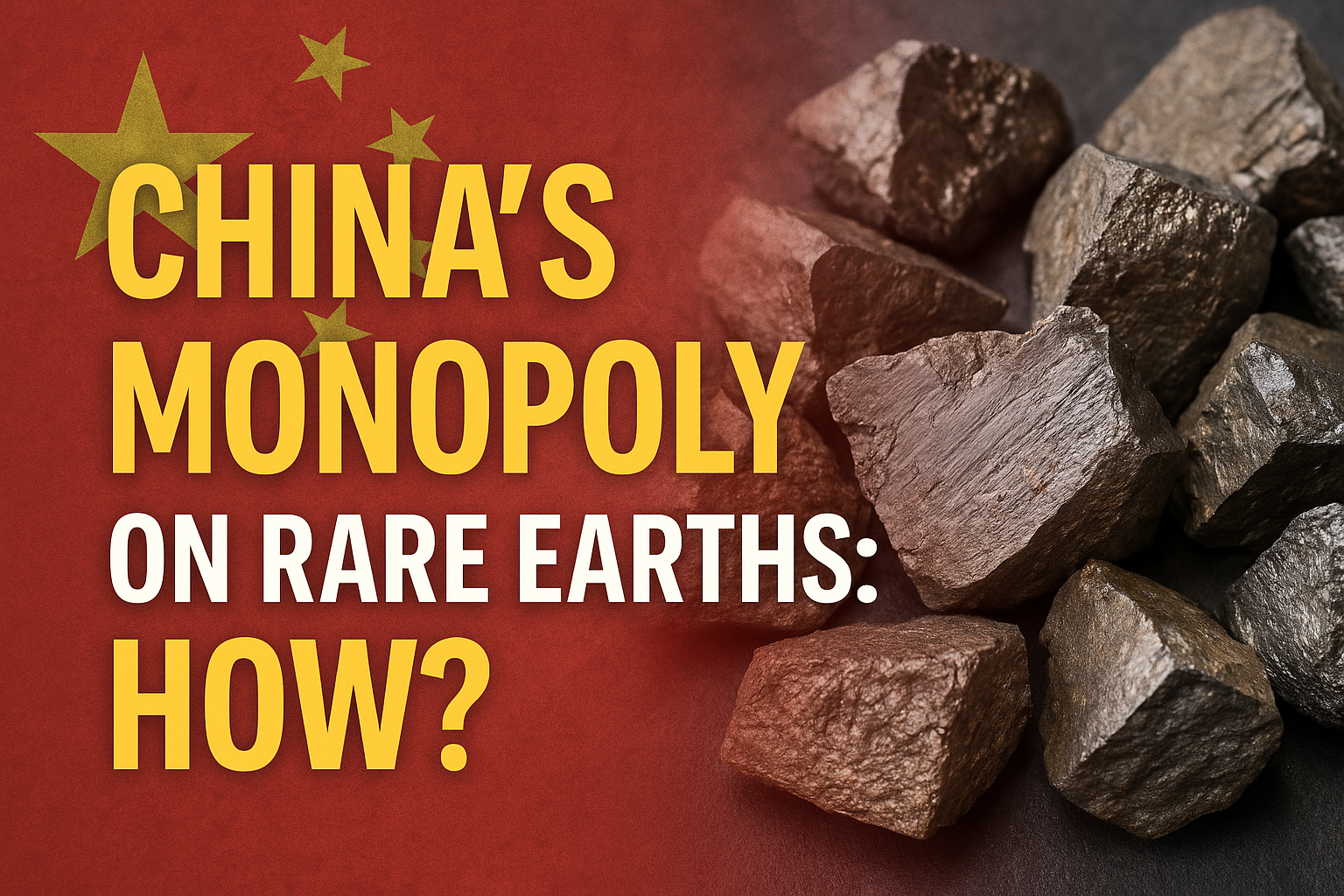

China’s dominance over the global rare earth minerals supply chain, which includes 17 elements critical for technologies like smartphones, electric vehicles, wind turbines, and defense systems, is the result of decades of strategic policies, economic incentives, and geopolitical maneuvering. China has near absolute monopoly on these rare earths.
But how China achieved this control? The answer has many dimensions such as China's strategic vision and early investment in the field. Then it's expertise on the mining, regulatory framework and others. These points are discussed one by one.
China recognized the strategic importance of rare earths early on. In 1992, Deng Xiaoping famously stated, “The Middle East has oil; China has rare earths,” signaling the country’s intent to leverage its resources. With over 30% of global reserves, primarily in Inner Mongolia’s Bayan Obo mine, China began investing heavily in its rare earth industry as early as the 1920s, following the discovery of deposits.
By the 1980s, the government provided export tax rebates to mining companies, lowering production costs and enabling Chinese firms to capture market share. From 1985 to 1995, China’s rare earth production surged from 8,500 metric tons to 48,000 metric tons, increasing its global mining share from 21.4% to 60.1%.
The Chinese government declared rare earths a protected strategic resource in 1990, restricting foreign firms from mining and limiting their role in processing to joint ventures with Chinese companies. These partnerships allowed China to absorb foreign technology and expertise, particularly from the US, Canada, and Japan, while gradually sidelining foreign competition. For instance, in 1979, Japan’s Inoue Japax Research collaborated with China on ore analysis, and by 1989, US firm Tredas International partnered with a Chinese company to produce magnets.
China leveraged low labor costs, lax environmental regulations, and state subsidies to outcompete global producers. By the 1990s, Western companies, facing high operational costs and stricter environmental standards, began shifting production to China. Large US firms like Molycorp shut down, unable to compete with China’s cheaper output. This period saw China’s production soar, reaching up to 97% of global supply by the early 2000s. The government also strategically flooded the market with low-cost rare earths, discouraging foreign investment in new mines and further consolidating its position.
China’s dominance isn’t just in mining but in the technically challenging and environmentally damaging refining process. By 2023, China controlled nearly 90% of global rare earth processing, a critical chokepoint in the supply chain. While countries like the US (Mountain Pass mine) and Australia (Lynas Rare Earths) have increased mining, much of their ore is still sent to China for processing due to a lack of domestic refining capacity elsewhere. China’s vertical integration—controlling mining, refining, and manufacturing of end products like magnets (90% of global production)—makes it indispensable.
Starting in the late 1990s, China imposed export quotas to prioritize domestic needs and encourage foreign manufacturers to relocate to China for stable supply. In 2010, Beijing slashed quotas by 37%, reducing exports to 30,259 metric tons, causing global prices to spike from $9,461 per metric ton in 2009 to $66,957 in 2011. The same year, China briefly halted rare earth exports to Japan during a territorial dispute, highlighting its willingness to use supply as a geopolitical tool.
The World Trade Organization ruled against China’s export restrictions in 2015, but by then, China had solidified its dominance. More recently, in 2024-2025, China extended export controls on key minerals like terbium, yttrium, and dysprosium, often in retaliation to US tariffs and tech sanctions, further tightening its grip.
China’s government has continuously tightened control over its rare earth sector. Post-2010, Beijing cracked down on illegal mining, corruption, and smuggling, consolidating the industry under state-owned enterprises. The 2016-2020 Development Plan for the Rare Earths Industry emphasized innovation, environmental standards, and industry consolidation, while the 2021 reorganization further centralized control. In 2024, China declared rare earths a “state resource,” introducing new rules on mining, smelting, and trade to protect its strategic interests.
Despite global efforts to diversify supply chains, China’s low production costs, established infrastructure, and lenient environmental standards pose significant hurdles. The US, which produces 12.3% of global rare earths as of 2023, still relies on China for processing, with facilities like Mountain Pass shipping ore abroad. Australia’s Lynas Rare Earths supplies Japan but struggles to scale refining capacity. High costs, environmental concerns, and a lack of expertise—evidenced by the decline in US mining engineering programs from 25 in 1983 to 15 in 2023, compared to China’s 38—further complicate diversification efforts.
While China’s dominance is often framed as a deliberate monopolistic strategy, it’s worth noting that its control also stems from the West’s historical complacency. The US and others prioritized short-term cost benefits over long-term resource security, outsourcing production to China despite known risks.
In summary, China gained control over the global rare earth supply chain through early strategic investment, economic advantages, stringent export controls, and dominance in processing, all underpinned by state-driven policies. This has left the world heavily reliant on China, with diversification efforts lagging due to structural and geopolitical challenges.
Comments
Write Comment